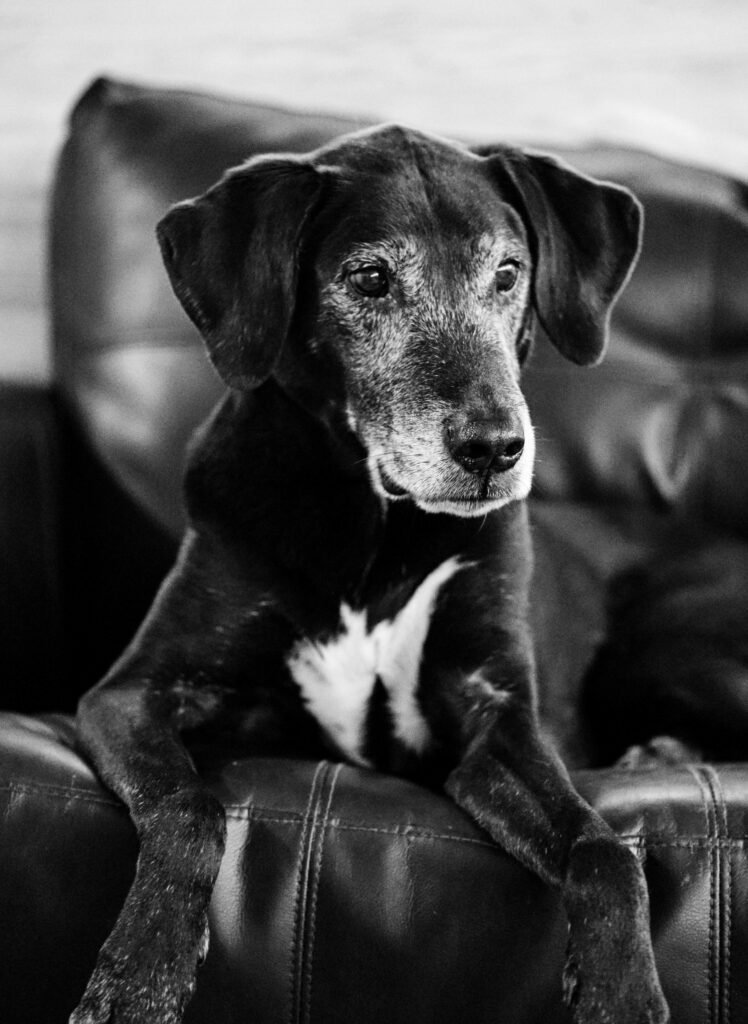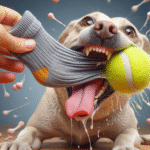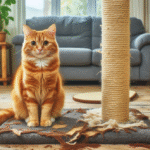Understanding Senior Pet Health
As pets age, they undergo significant physical and emotional changes that can impact their overall health and well-being. Generally, dogs and cats are considered seniors when they reach around seven years of age, though this can vary depending on breed and species. Acknowledging these changes early is vital for promoting a better quality of life for aging pets.
Physically, senior dogs and cats may experience a decline in mobility due to arthritis or other joint-related issues. This reduced mobility can lead to weight gain, which further exacerbates health problems. Additionally, dental issues such as periodontal disease are common, impacting their ability to eat comfortably. Sensory decline, including diminished sight and hearing, is another concern that can affect their interactions with their environment and family members.
Senior pets may also exhibit changes in behavior. This might include increased anxiety or altered sleep patterns, which are often linked to their declining health. Owners might notice their pets becoming less playful or more withdrawn, indicating discomfort or emotional distress. An understanding of these emotional fluctuations is crucial to ensure that pets receive appropriate care and attention.
Regular veterinary check-ups become increasingly important as pets age. These visits allow for early detection of health issues, enabling proactive management strategies. Common health challenges for senior pets include chronic conditions like diabetes, kidney disease, and heart problems, which can all be effectively managed when caught early. Keeping an eye on any changes in your pet’s eating habits, energy levels, or grooming behavior can provide valuable insights into their health status. Thus, being attentive to these aspects and recognizing the signs of aging can contribute considerably to the longevity and quality of life of senior pets.
Nutritional Needs for Senior Pets
As pets age, their metabolic processes undergo significant changes, requiring adjustments to their dietary intake to maintain optimal health. Senior dogs and cats often experience a decrease in muscle mass, changes in their digestive efficiency, and variations in their energy levels. These physiological alterations affect their nutritional needs, making it essential for pet owners to provide a balanced diet tailored to senior pet care.
Aging pets typically benefit from a diet that is rich in high-quality protein. This helps to support muscle maintenance and overall health. However, it is crucial to balance protein levels with reduced fat content, as senior animals may have less energy and a tendency to gain weight. Incorporating lean protein sources such as chicken, turkey, or fish, combined with wholesome grains and vegetables, can create a well-rounded meal that addresses these needs.
In addition to macronutrients, senior pets may require functional foods that deliver specific health benefits. Ingredients such as omega-3 fatty acids can support joint health and cognitive function, which are increasingly important as pets age. Likewise, antioxidants found in fruits and vegetables can assist in combating oxidative stress, thereby potentially reducing the risk of chronic diseases. Supplements, such as glucosamine and chondroitin, are also commonly recommended to aid joint health and mobility.
Specialized senior pet food formulas are designed to meet the unique requirements of older dogs and cats. These diets often contain fewer calories, adjusted protein levels, and enhanced fiber to aid digestion, ensuring that aging pets receive the nutrition they need without overloading their systems. As pet owners consider the best options for their furry companions, consulting with a veterinarian can provide valuable insight into creating a nutritious plan that supports the health and well-being of senior pets.
Joint Care and Mobility Support
As pets age, they often face a variety of joint-related issues that can significantly impact their mobility and overall quality of life. Common problems include arthritis, hip dysplasia, and degenerative joint disease, which can lead to pain, stiffness, and reduced activity levels. These conditions not only affect physical health but can also result in behavioral changes due to discomfort. It is crucial for pet owners to recognize the symptoms of joint problems, as early intervention can make a significant difference in managing their senior pets’ health.
One effective approach in supporting joint health is the use of joint supplements specifically formulated for aging pets. These might include glucosamine, chondroitin sulfate, and omega-3 fatty acids, which can help reduce inflammation and support cartilage health. Additionally, incorporating a balanced diet that is rich in nutrients and tailored to the needs of senior pets can play a vital role in maintaining mobility. Always consult with a veterinarian before introducing new supplements or diets to ensure they meet the specific health needs of your pet.
Regular exercise is another key component in promoting mobility and joint health in senior dogs and cats. Gentle activities such as short, frequent walks, and low-impact exercises can help maintain muscle mass and joint flexibility without overexerting the pet. Tailoring an exercise routine to your pet’s energy levels will ensure they stay active while minimizing strain on their joints. Alternatives such as hydrotherapy have gained popularity as they allow pets to exercise in a buoyant environment, reducing the impact on their joints.
Additionally, therapy options like acupuncture and physical therapy can provide significant relief from joint pain and enhance mobility. Creating a safe and accommodating living space is also essential. Ensure there are no obstacles, and consider using ramps for easy access to favorite spots. Implementing these strategies will enhance the lifestyle of senior pets, allowing them to maintain their mobility and happiness in their golden years.
Routine Veterinary Checkups
Regular veterinary checkups are crucial for the health and well-being of senior pets. As dogs and cats age, they become more susceptible to various health issues, making routine visits to the veterinarian an essential part of their care. These checkups allow veterinarians to monitor a pet’s overall health, assess any changes in their condition, and provide necessary preventive care, ensuring that senior pets enjoy a better quality of life.
During routine checkups, veterinarians will typically conduct a thorough physical examination, which may include assessing the pet’s weight, coat condition, dental health, and joint mobility. Additionally, veterinarians may recommend routine screenings such as blood tests, urine tests, and X-rays. These screenings help identify underlying health problems, such as kidney disease, diabetes, or arthritis, often before symptoms become severe. Early detection is crucial, as it can significantly extend the lifespan of senior pets and improve their overall quality of life.
Vaccinations also play an important role in the health management of senior pets. While many vaccinations may have been administered during a pet’s younger years, senior animals may require booster shots to protect them against diseases that can pose a higher risk due to their age-related vulnerabilities. To provide comprehensive care, veterinarians might recommend tailored vaccination protocols based on the pet’s lifestyle, health status, and any ongoing treatments.
Incorporating regular veterinary visits into a senior pet’s healthcare plan fosters a proactive approach to their health. Through routine assessments, screenings, and vaccinations, pet owners can better anticipate potential health challenges and address them promptly. By prioritizing these veterinary checkups, pet owners can significantly enhance their senior companions’ health and well-being, ensuring they lead longer, happier lives.
Mental Stimulation for Senior Pets
As pets age, maintaining their mental agility becomes increasingly vital for their overall well-being. Mental stimulation is essential for senior pets, particularly dogs and cats, as it can help prevent cognitive decline associated with aging. Engaging older pets in mentally stimulating activities can improve their quality of life by keeping their minds sharp and enhancing their emotional health.
One effective way to promote cognitive function is through puzzles designed specifically for pets. These interactive games challenge older dogs and cats to think critically and problem-solve, encouraging them to engage actively. Puzzle toys that dispense treats are particularly appealing, as they reward the pet’s effort to manipulate the toy, thus creating a stimulating and enjoyable experience. It is important to select puzzles with varying difficulty levels, allowing seniors to gradually progress as their abilities permit.
In addition to puzzle toys, training exercises can also be beneficial. Senior pets may have mastered basic commands, but refreshing their knowledge through fun training sessions can provide essential mental engagement. Teaching new tricks or practicing commands with positive reinforcement not only stimulates their minds but also reinforces the bond between pet and owner. A simple game of hide and seek can also be a fantastic way to playfully engage their minds while keeping them physically active.
Another option for encouraging cognitive engagement is interactive play. Using feather wands for cats or tug toys for dogs stimulates their natural instincts while requiring mental focus. Regularly engaging with your pet in play fosters their curiosity and encourages social interaction, which is crucial as they age. Moreover, incorporating a variety of activities can prevent boredom and promote lifelong learning, ultimately enriching their lives.
Dental Care for Aging Pets
As pets age, maintaining their dental health becomes increasingly critical. Poor dental hygiene in senior dogs and cats can lead to severe health issues, including periodontal disease, tooth loss, and even systemic infections affecting vital organs such as the heart and kidneys. This emphasizes the need for a proactive approach to oral care in aging pets.
Regular brushing is one of the most effective ways to maintain oral hygiene. Ideally, pet owners should begin this routine when their pets are young, but it is never too late to establish a brushing routine. Use a soft-bristled toothbrush and toothpaste formulated specifically for pets, as human toothpaste can be harmful. Aim to brush your pet’s teeth at least two to three times a week. This regular practice helps remove plaque and prevent tartar buildup, which are precursors to dental disease.
In addition to brushing, incorporating dental treats and toys into your pet’s routine can enhance their dental health. These products are designed to reduce plaque and tartar while satisfying your pet’s natural urge to chew. Select treats that are specifically designed to support oral health, and check for the Veterinary Oral Health Council (VOHC) seal of approval, indicating that the product meets certain standards for efficacy.
Finally, professional cleanings are essential for senior pets. A veterinarian can perform a thorough dental examination and cleaning that may be beyond the scope of home care. Regular veterinary checkups should always include a dental assessment, allowing for the early detection of dental issues. Depending on your pet’s oral health, your veterinarian may recommend professional cleanings annually or biannually to ensure optimal dental health.
By prioritizing dental care, pet owners can help their senior dogs and cats enjoy a better quality of life and potentially prevent some serious health issues associated with poor oral hygiene.
Recognizing Signs of Aging and When to Seek Help
As pets enter their senior years, subtle yet significant changes may manifest, indicating their declining health. Understanding these signs is crucial for pet owners to ensure their companions maintain a high quality of life during this stage. One of the first indicators of aging in dogs and cats can be alterations in behavior. If a once playful pet suddenly becomes lethargic or starts to withdraw from social interactions, it may signal discomfort or a change in health status.
Mobility issues are another common concern among aging pets. Owners may notice their senior dog or cat struggling to rise, exhibiting stiffness after resting, or hesitating to engage in previously enjoyed activities like walks or playtime. These changes often point to joint issues or arthritis, conditions prevalent in older animals. Regular monitoring of mobility can help owners determine if their pet requires veterinary evaluation.
Another notable aspect of senior pet care is the examination of their appetite. Significant weight loss, an increase in thirst, or complete loss of appetite can be alarming signs warranting veterinary consultation. Changes in drinking habits, such as excessive thirst or urination, could indicate underlying health problems such as kidney disease or diabetes.
Unusual vocalizations can also serve as indicators of discomfort or cognitive decline in senior pets. Increased barking, meowing, or signs of anxiety may reflect underlying pain or confusion, necessitating further investigation. As caregivers, it is essential to remain attentive to our pets’ behaviors and overall demeanor, recognizing that early detection of health issues can lead to more effective treatment and better outcomes.
In summary, observing for behavioral changes, mobility issues, altered appetite, and unusual vocalizations is essential for pet owners. Timely consultation with a veterinarian can ensure that any health concerns are promptly addressed, leading to improved quality of life for senior dogs and cats.
Home Modifications for Senior Pet Comfort
As pets age, their physical abilities often decline, necessitating adjustments in their living environment to enhance their comfort and mobility. Simple home modifications can significantly improve the quality of life for senior dogs and cats. One of the most pertinent changes is the installation of ramps. For pets that struggle with stairs, a gently sloped ramp can provide easy access to favorite resting spots, making it easier for them to navigate their surroundings while minimizing the risk of injury.
Moreover, providing orthopedic beds is another effective way to cater to the aging needs of pets. These specialized beds offer excellent support for joints and can alleviate discomfort associated with arthritis or other health issues common among senior animals. Ensuring that these beds are placed in quiet, warm areas will encourage seniors to rest comfortably while reducing their stress levels.
Creating safe resting areas can significantly boost the well-being of older pets. Using non-slip mats or carpets can prevent slips that might lead to falls, especially in areas where pets frequently move. Moreover, placing their food and water bowls in easily accessible locations can help minimize physical strain. It is also advisable to keep toys and other essential items low to the ground, ensuring that senior pets can engage in play safely.
Another recommendation is to ensure that the home is free from hazards such as sharp edges, exposed wires, or clutter that may cause injury. Consider using baby gates to restrict access to areas that might pose risks, such as staircases. Lastly, proper lighting can aid in creating a safer environment, especially for pets that may experience vision impairments. Simple modifications like these can greatly enhance the accessibility and comfort of your home for senior pets, allowing them to enjoy their golden years with ease.
Creating a Loving Routine for Senior Pets
Establishing a gentle daily routine for senior pets is crucial for their overall well-being and comfort. As dogs and cats age, they may experience changes in energy levels, mobility, and health. A consistent schedule provides them with security and predictability, which is essential in helping them cope with these changes. A structured day can also enhance the bond between pets and their owners, fostering a loving environment where pets feel valued and cared for.
A typical day can begin with a morning feeding that takes into account the specific dietary needs of your senior pet. It’s often best to offer easily digestible foods and consider smaller portions throughout the day to reduce strain on their digestive systems. Following breakfast, a calm, short walk or gentle stretching can help promote mobility and stimulate their joints, keeping them active without overexerting them.
Midday can be reserved for rest and relaxation, which is essential for older pets. Creating a comfortable resting area with soft bedding allows them to recharge. During this time, offering interactive toys or subtle playtime can keep their minds engaged without causing fatigue. Once they rest, it’s beneficial to integrate a small training session or basic obedience practice to maintain their cognitive skills and provide mental stimulation.
Evening is often the ideal time for a longer, more relaxed walk, continued active engagement, and additional opportunities for affection. Evening feeding can also be tailored to their specific needs, and giving them a calming routine before bedtime—such as quiet time with gentle petting or brushing—can help them feel secure as they wind down for the night. By maintaining a daily routine filled with nourishing activities, you will not only support the health of your senior pet but also strengthen your loving bond, ensuring their final years are lived with dignity and warmth.






